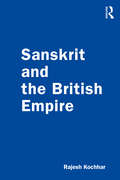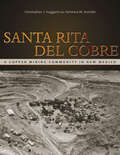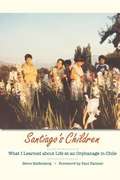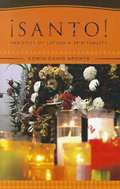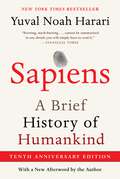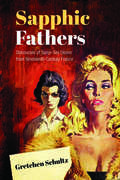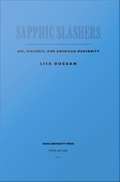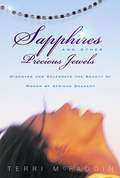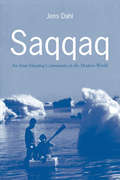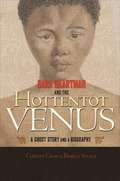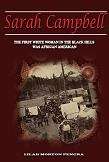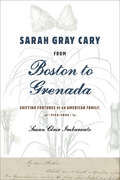- Table View
- List View
Sanskrit and the British Empire
by Rajesh KochharThis book focuses on the career of Sanskrit in British India. Europe’s discovery of Sanskrit was a development of far-reaching historical significance in terms of intellectual curiosity, evangelical considerations, colonial administrative requirements, and political compulsions. The volume critically analyses this interplay between Sanskrit texts and the imperial and colonial presence in India. It goes beyond the question of what the discovery of Sanskrit meant for the West and examines what this collocation meant for India. The author looks at how the British needed Sanskrit for dispensation of Hindu civil law; how learned Pandits were cultivated; and how scholarship was developed transcending utilitarianism. He also studies the extent to which Sanskrit in pre- and non-British India had a bearing on Europe and explores themes such as Jesuit Sanskrit, Hinduism in practice, scripturism, Aryan Race Theory, seductive orientalism, and the introduction of archivalism in India. Rich in archival sources, this unique book will be useful for scholars and researchers of colonial history, modern Indian history, Indology, linguistics, history of education, Sanskrit studies, post-colonial studies, and cultural studies.
Santa Rita del Cobre: A Copper Mining Community in New Mexico (Mining the American West)
by Christopher J. Huggard Terrence M. HumbleAn account of the rise and fall of a mining town over two centuries, including photos: &“An excellent story of the people and their community.&” ―New Mexico Historical ReviewThe Spanish, Mexicans, and Americans, successively, mined copper for more than two hundred years in Santa Rita, New Mexico. Starting in 1799 after an Apache man led the Spanish to the native copper deposits, miners at the site followed industry developments in the nineteenth century to create a network of underground mines. In the early twentieth century these works became part of the Chino Copper Company&’s open-pit mining operations—operations that would overtake Santa Rita by 1970. In Santa Rita del Cobre, Christopher Huggard and Terrence Humble detail these developments with in-depth explanations of mining technology, and describe the effects on and consequences for the workers, the community, and the natural environment. Originally known as El Cobre, the mining-military camp of Santa Rita del Cobre ultimately became the company town of Santa Rita, which after World War II evolved into an independent community. From the town&’s beginnings to its demise, its mixed-heritage inhabitants from Mexico and the United States cultivated rich family, educational, religious, social, and labor traditions. Extensive archival photographs, many taken by officials of the Kennecott Copper Corporation, accompany the text, providing an important visual and historical record of a town swallowed up by the industry that created it.
Santal Women and the Health Care Regime: Pandemic, Predicament and Access
by Faraha Nawaz AN BushraThis book explores the access to healthcare service during a global pandemic by rural ethnic women of Bangladesh. The authors consider different dimensions of accessibility such as- physical access, financial access, health behaviour and different socio-cultural factors of access, and attempts to explore the degree of access to healthcare of rural ethnic women from Santal tribe in Bangladesh during the COVID-19 pandemic. This exploration is likely to be helpful for healthcare providing organizations, international donor agencies, policy makers, and future researchers of gender studies, social policy, development studies among other fields.
Santeria: African Spirits in America
by Joseph M. MurphySantería represents the first in-depth, scholarly account of a profound way of wisdom that is growing in importance in America today. A professional academic and himself a participant in the Santería community of the Bronx for several years, Joseph Murphy offers a powerful description and insightful analysis of this African/Cuban religion. He traces the survival of an ancient spiritual path from its West African Yoruba origins, through nearly two centuries of slavery in the New World, to its presence in the urban centers of the United States, where it continues to inspire seekers with its compelling vision.
Santería Enthroned: Art, Ritual, and Innovation in an Afro-Cuban Religion (Routledge Revivals)
by David H. BrownEver since its emergence in colonial-era Cuba, Afro-Cuban Santería (or Lucumí) has displayed a complex dynamic of continuity and change in its institutions, rituals, and iconography. Originally published in 2003 Santería Enthroned combines art, history, cultural anthropology, and ethnohistory to show how Africans and their descendants have developed novel forms of religious practice in the face of relentless oppression. Focusing on the royal throne as a potent metaphor in Santería belief and practice it shows how negotiations among ideologically competing interests have shaped the religion’s symbols, rituals, and institutions from the nineteenth century to the present. Rich case studies of change in Cuba and the United States, including a New Jersey temple and South Carolina’s Oyotunji Village, reveal patterns of innovation similar to those found among rival Yoruba kingdoms in Nigeria. Throughout, the book argues for a theoretical perspective on culture as a field of potential strategies and "usuable pasts" that actors draw upon to craft new forms and identities – a perspective that will be invaluable to all students of the African Diaspora.
Santiago's Children
by Steve ReifenbergUnclear about his future career path, Steve Reifenberg found himself in the early 1980s working at a small orphanage in a poor neighborhood in Santiago, Chile, where a determined single woman was trying to create a stable home for a dozen or so children who had been abandoned or abused. With little more than good intentions and very limited Spanish, the 23-year-old Reifenberg plunged into the life of the Hogar Domingo Savio, becoming a foster father to kids who stretched his capacities for compassion and understanding in ways he never could have imagined back in the United States. In this beautifully written memoir, Reifenberg recalls his two years at the Hogar Domingo Savio. His vivid descriptions create indelible portraits of a dozen remarkable kids--mature-beyond-her-years Verónica; sullen, unresponsive Marcelo; and irrepressible toddler Andrés, among them. As Reifenberg learns more about the children's circumstances, he begins to see the bigger picture of life in Chile at a crucial moment in its history. The early 1980s were a time of economic crisis and political uprising against the brutal military dictatorship of Augusto Pinochet. Reifenberg skillfully interweaves the story of the orphanage with the broader national and international forces that dramatically impact the lives of the kids. By the end of Santiago's Children, Reifenberg has told an engrossing story not only of his own coming-of-age, but also of the courage and resilience of the poorest and most vulnerable residents of Latin America.
Santo!: Varieties of Latino/a Spirituality
by Edwin David AponteAn overview of Latino/a spiritualities today--Protestant, Catholic, Pentecostal, and non-Christian and the challenges they bring to Christian theology and ministry. Given the context of increasing religious pluralism and a burgeoning interest in religions, religiosity, and spirituality within the United States and the knowledge that by the mid-twenty-first century an estimated 100 million Americans will claim Latin origin, an understanding of the varieties of Latino/a spirituality becomes essential. This book focuses on the ways in which Latinos and Latinas participate in the pursuit and practice of the spiritual or holy santo as part of their lived religion. In seven chapters, Aponte explores various understandings of santo and its participation in daily life, rites of passage, and worship.
Santorio Santori and the Emergence of Quantified Medicine, 1614-1790: Corpuscularianism, Technology and Experimentation (Palgrave Studies in Medieval and Early Modern Medicine)
by Jonathan Barry Fabrizio BigottiThis book examines the life and works of Santorio Santori and his impact on the history of medicine and natural philosophy. Reputed as the father of experimental medicine and procedures, he is also known for his invention of numerous scientific instruments, including early precision medical devices (pulsimeters, hygrometers, thermometers, anemometers), as well as clinical and surgical tools. The chapters in this volume explore Santorio’s legacy through the seventeenth and eighteenth centuries. They highlight the role played by medical practitioners such as Santorio in the development of corpuscularian ideas, central to the ‘new science’ of the period, and place new emphasis on the role of the life sciences, chemistry and medicine in encouraging new forms of experimentation and instrument-making.Chapters 1 and 2 are available open access under a Creative Commons Attribution 4.0 International License via link.springer.com.
Sapiens [Tenth Anniversary Edition]: A Brief History of Humankind
by Yuval Noah HarariNew York Times Readers’ Pick: Top 100 Books of the 21st CenturyThe tenth anniversary edition of the internationally bestselling phenomenon that cemented Yuval Noah Harari as one of the most prominent historians of our time—featuring a new afterword from the author.One hundred thousand years ago, at least six human species inhabited the earth. Today there is just one. Us. Homo sapiens. How did our species succeed in the battle for dominance? Why did our foraging ancestors come together to create cities and kingdoms? How did we come to believe in gods, nations, and human rights; to trust money, books, and laws; and to be enslaved by bureaucracy, timetables, and consumerism? And what will our world be like in the millennia to come?In Sapiens, Professor Yuval Noah Harari spans the whole of human history, from the very first humans to walk the earth to the radical—and sometimes devastating—breakthroughs of the Cognitive, Agricultural, and Scientific Revolutions. Drawing on insights from biology, anthropology, paleontology, and economics, and incorporating full-color illustrations throughout the text, he explores how the currents of history have shaped our human societies, the animals and plants around us, and even our personalities. Can we ever free our behavior from the legacy of our ancestors? And what, if anything, can we do to influence the course of the centuries to come?Bold, wide-ranging, and provocative, Sapiens integrates history and science to challenge everything we thought we knew about being human: our thoughts, our actions, our heritage...and our future.
Sapphic Fathers
by Gretchen SchultzLiterature that explored female homosexuality flourished in late nineteenth-century France. Poets, novelists, and pornographers, whether Symbolists, Realists, or Decadents, were all part of this literary moment. In Sapphic Fathers, Gretchen Schultz explores how these male writers and their readers took lesbianism as a cipher for apprehensions about sex and gender during a time of social and political upheaval.Tracing this phenomenon through poetry (Baudelaire, Verlaine), erotica and the popular novel (Belot), and literary fiction (Zola, Maupassant, Péladan, Mendès), and into scientific treatises, Schultz demonstrates that the literary discourse on lesbianism became the basis for the scientific and medical understanding of female same-sex desire in France. She also shows that the cumulative impact of this discourse left tangible traces that lasted well beyond nineteenth-century France, persisting into twentieth-century America to become the basis of lesbian pulp fiction after the Second World War.
Sapphic Slashers: Sex, Violence, and American Modernity
by Lisa DugganOn a winter day in 1892, in the broad daylight of downtown Memphis, Tennessee, a middle class woman named Alice Mitchell slashed the throat of her lover, Freda Ward, killing her instantly. Local, national, and international newspapers, medical and scientific publications, and popular fiction writers all clamored to cover the ensuing "girl lovers" murder trial. Lisa Duggan locates in this sensationalized event the emergence of the lesbian in U. S. mass culture and shows how newly "modern" notions of normality and morality that arose from such cases still haunt and distort lesbian and gay politics to the present day. Situating this story alongside simultaneously circulating lynching narratives (and its resistant versions, such as those of Memphis antilynching activist Ida B. Wells) Duggan reveals how stories of sex and violence were crucial to the development of American modernity. While careful to point out the differences between the public reigns of terror that led to many lynchings and the rarer instances of the murder of one woman by another privately motivated woman, Duggan asserts that dominant versions of both sets of stories contributed to the marginalization of African Americans and women while solidifying a distinctly white, male, heterosexual form of American citizenship. Having explored the role of turn-of-the-century print media--and in particular their tendency toward sensationalism--Duggan moves next to a review of sexology literature and to novels, most notably Radclyffe Hall's The Well of Loneliness. Sapphic Slashers concludes with two appendices, one of which presents a detailed summary of Ward's murder, the trial, and Mitchell's eventual institutionalization. The other presents transcriptions of letters exchanged between the two women prior to the crime. Combining cultural history, feminist and queer theory, narrative analysis, and compelling storytelling, Sapphic Slashers provides the first history of the emergence of the lesbian in twentieth-century mass culture.
Sapphires And Other Precious Jewels: Discover and Celebrate the Beauty of Women of African Descent
by Terri McfaddinWomen of African Ancestry Shine With the Beauty, Value, and Uniqueness of Precious Jewels. If any race of women should recognize that their value is far above rubies, pearls, and sapphires, says author Terri McFaddin, it is those of African ancestry. Like precious gemstones formed within the earth, we have endured hard times, the heat of adversity, and intense pressures, and have come out of the fire as a rare and beautiful treasure. We have made tremendous progress in the struggle for racial equality. Yet many women of color do not fully understand their true worth and God-given potential. Exploring vital biblical truths,Sapphires and Other Precious Jewelsempowers us to recognize and fully embrace the qualities that make us precious, valuable, and strong–sapphires of great price. Explore the Treasured Qualities of Black Women Through the Twelve Jewels in the Breastplate of the High Priest. As you examine the scriptural principles drawn from Exodus 28, you’ll discover, perhaps for the first time, that your beauty is both natural and spiritual, that God created and affirms your beauty and uniqueness, and that he calls you to demonstrate and celebrate the extraordinary ways in which you are fearfully and wonderfully made.
Sapphistries: A Global History of Love between Women (Intersections #15)
by Leila J RuppA lyrical and meticulously researched mapping of the ways in which diverse societies have shaped female same-sex sexuality across time and geography. From the ancient poet Sappho to tombois in contemporary Indonesia, women throughout history and around the globe have desired, loved, and had sex with other women. In beautiful prose, Sapphistries tells their stories, capturing the multitude of ways that diverse societies have shaped female same-sex sexuality across time and place. Leila J. Rupp reveals how, from the time of the very earliest societies, the possibility of love between women has been known, even when it is feared, ignored, or denied. We hear women in the sex-segregated spaces of convents and harems whispering words of love. We see women beginning to find each other on the streets of London and Amsterdam, in the aristocratic circles of Paris, in the factories of Shanghai. We find women&’s desire and love for women meeting the light of day as Japanese schoolgirls fall in love, and lesbian bars and clubs spread from 1920s Berlin to 1950s Buffalo. And we encounter a world of difference in the twenty-first century, as transnational concepts and lesbian identities meet local understandings of how two women might love each other. Giving voice to words from the mouths and pens of women, and from men&’s prohibitions, reports, literature, art, imaginings, pornography, and court cases, Rupp also creatively employs fiction to imagine possibilities when there is no historical evidence. Sapphistries combines lyrical narrative with meticulous historical research, providing an eminently readable and uniquely sweeping story of desire, love, and sex between women around the globe from the beginning of time to the presen
Sappho's Legacy: Convivial Economics on a Greek Isle (SUNY series, Praxis: Theory in Action)
by Marina KaridesWinner of the 2023 Gourmand Cookbook Award for Greece in the Women CategoryImaginatively interweaving literatures across a variety of subjects, Sappho's Legacy identifies the crucial role that islands and Greek economic culture play in teaching about capitalism's failures and alternatives. Marina Karides delivers a historical and ethnographic account of food cooperatives and microenterprises on the Greek island of Lesvos following the 2008 financial crisis to reveal the success stories of grassroots, traditional, and community-centered economics organized by people marginalized on the basis of gender, sexuality, and ethnicity. Karides offers hope to others who are working against the tide of neoliberalism and heteropatriarchy to develop alternative or convivial economic practices that serve communities by providing a trail of rhythms from ancient times to the present that showcase Greece's historical resistance.
Saqqaq
by Jens DahlIn the early eighteenth century, West Greenland became a colonial territory of Denmark. Nevertheless, a large number of Inuit communities maintained significant aspects of their cultural and economic practices. When home rule was introduced in 1979, the benign paternalism of colonial days was superseded by the incorporation of ethnic and institutional relations under a unified political system in Greenland. A national Greenlandic Inuit community was created, forcing further cultural adaptation on the part of the Inuit. Jens Dahl analyses life in Saqqaq, a small Greenlandic hunting community, and explores the changes that have taken place there over the last couple of decades. As modern technology is introduced and the worldviews of the Greenlandic Inuit change, the hunting community continues to base its life on a traditional notions, including an economy involving sharing, exchanging, and free access to the hunting and fishing grounds. Dahl demonstrates that Saqqaq and other communities have adapted to colonial and post-colonial influences by combining their practices of hunting and fishing with other forms of employment. In the midst of these economic developments, however, hunters are losing control over their traditional lands. Dahl discusses this conflict within the political context, making "Saqqaq" a unique and valuable example of Inuit survival in the modern world.
Sara Baartman and the Hottentot Venus: A Ghost Story and a Biography
by Pamela Scully Clifton CraisDisplayed on European stages from 1810 to 1815 as the Hottentot Venus, Sara Baartman was one of the most famous women of her day, and also one of the least known. As the Hottentot Venus, she was seen by Westerners as alluring and primitive, a reflection of their fears and suppressed desires. But who was Sara Baartman? Who was the woman who became the Hottentot Venus? Based on research and interviews that span three continents, Sara Baartman and the Hottentot Venus tells the entwined histories of an illusive life and a famous icon. In doing so, the book raises questions about the possibilities and limits of biography for understanding those who live between and among different cultures. In reconstructing Baartman's life, the book traverses the South African frontier and its genocidal violence, cosmopolitan Cape Town, the ending of the slave trade, the Industrial Revolution, the French Revolution, the Napoleonic Wars, London and Parisian high society, and the rise of racial science. The authors discuss the ramifications of discovering that when Baartman went to London, she was older than originally assumed, and they explore the enduring impact of the Hottentot Venus on ideas about women, race, and sexuality. The book concludes with the politics involved in returning Baartman's remains to her home country, and connects Baartman's story to her descendants in nineteenth- and twentieth-century South Africa. Sara Baartman and the Hottentot Venus offers the authoritative account of one woman's life and reinstates her to the full complexity of her history.
Sara Baartman and the Hottentot Venus: A Ghost Story and a Biography
by Pamela Scully Clifton CraisDisplayed on European stages from 1810 to 1815 as the Hottentot Venus, Sara Baartman was one of the most famous women of her day, and also one of the least known. As the Hottentot Venus, she was seen by Westerners as alluring and primitive, a reflection of their fears and suppressed desires. But who was Sara Baartman? Who was the woman who became the Hottentot Venus? Based on research and interviews that span three continents, Sara Baartman and the Hottentot Venus tells the entwined histories of an illusive life and a famous icon. In doing so, the book raises questions about the possibilities and limits of biography for understanding those who live between and among different cultures. In reconstructing Baartman's life, the book traverses the South African frontier and its genocidal violence, cosmopolitan Cape Town, the ending of the slave trade, the Industrial Revolution, the French Revolution, the Napoleonic Wars, London and Parisian high society, and the rise of racial science. The authors discuss the ramifications of discovering that when Baartman went to London, she was older than originally assumed, and they explore the enduring impact of the Hottentot Venus on ideas about women, race, and sexuality. The book concludes with the politics involved in returning Baartman's remains to her home country, and connects Baartman's story to her descendants in nineteenth- and twentieth-century South Africa. Sara Baartman and the Hottentot Venus offers the authoritative account of one woman's life and reinstates her to the full complexity of her history.
Sarah Campbell: The First White Woman in the Black Hills Was African American
by Lilah PengraSarah Campbell is most well-known for accompanying Custer on his 1874 Expedition to the Black Hills as the cook for the army sutler. This impeccably researched and wonderfully told biography traces Campbell's roots to her 1823 birth to Marianne, enslaved by the fur-trading Duchouquettes. Campbell sued for and won her freedom at the age of 14 after a three-year court battle in St. Louis. The book delves into her values and how she protected herself from the racism of the day by her use of self-deprecating humor. Because Campbell claimed to be the "first white woman" in the Black Hills, the author explores the vernacular race and class connotations of the label "white" and being addressed as "Aunt Sally." Campbell returned to the Black Hills of Dakota Territory in 1876, located five silver mines and died on her ranch near Galena, DT, in 1888.
Sarah Gray Cary from Boston to Grenada: Shifting Fortunes of an American Family, 1764-1826
by Susan Clair ImbarratoFollow the changing fortunes of an early American family living through tumultuous times.The Cary family of Chelsea, Massachusetts, prospered as plantation owners and managers for nearly two decades in the West Indies before the Grenada slave revolts of 1795–1796 upended the sugar trade. Sarah Gray Cary used her quick intelligence and astute judgment to help her family adapt to their shifting fortunes. From Samuel Cary’s departure from Boston to St. Kitts in 1764 to the second generation’s search for trade throughout the West Indies, Susan Clair Imbarrato tells the compelling story of the Cary family from prosperity and crisis to renewal.Drawing on a wealth of archival material, this engaging book describes how Sarah Cary managed households in both Grenada and Chelsea while raising thirteen children. In particular, Imbarrato examines Sarah’s correspondence with her sons Samuel and Lucius, in which they address family matters, share opinions on political and social events, discuss literature and philosophy, and speculate about business.Sarah Gray Cary from Boston to Grenada offers a rare female perspective on colonial America and Caribbean plantation life and provides a unique view of a seminal period of early American history.
Sarah Johnson's Mount Vernon: The Forgotten History of an American Shrine
by Scott E. CasperNew Stories from an Old American ShrineThe home of our first president has come to symbolize the ideals of our nation: freedom for all, national solidarity, and universal democracy. Mount Vernon is a place where the memories of George Washington and the era of America's birth are carefully preserved and re-created for the nearly one million tourists who visit it every year. But behind the familiar stories lies a history that visitors never hear. Sarah Johnson's Mount Vernon recounts the experience of the hundreds of African Americans who are forgotten in Mount Vernon's narrative. Historian and archival sleuth Scott E. Casper recovers the remarkable history of former slave Sarah Johnson, who spent more than fifty years at Mount Vernon, before and after emancipation. Through her life and the lives of her family and friends, Casper provides an intimate picture of Mount Vernon's operation during the nineteenth and early twentieth centuries, years that are rarely part of its story. Working for the Washington heirs and then the Mount Vernon Ladies' Association, these African Americans played an essential part in creating the legacy of Mount Vernon as an American shrine. Their lives and contributions have long been lost to history and erased from memory. Casper restores them both, and in so doing adds a new layer of significance to America's most popular historical estate.
Sarah Waters and Contemporary Feminisms
by Adele Jones Claire O'CallaghanSarah Waters and Contemporary Feminisms presents ten readings of Sarah Waters's fictions published to date in relation to feminism and contemporary feminist theory. The analysis offered in the collection investigates how Waters engages with recent debates on women and gender and how her writings reflect the different concerns of contemporary feminist theories. In particular, the collection includes new and innovative readings of how Waters's novels address issues of patriarchy, female confinement, madness and misogyny, exploitation and oppression, repression and subordination, abortion, marriage and spinsterhood alongside passionate portrayals of female agency, desire, aesthetics, female sexual expression, and, of course, lesbianism.
Sarah's Diary: An unflinchingly honest account of one family's struggle with depression
by Sarah Griffin'I was fourteen when I found my Dad trying to commit suicide in the garage. Sounds shocking doesn't it? But that was part of me, part of living with my Dad'Sarah's Diary is the very personal diary of Sarah Griffin - an ordinary teenage girl learning to deal with the ups and downs of family life. On the outside hers was like any other family, but behind closed doors lay a sad and lonely secret. Sarah's Dad had depression -- a condition we've all heard of but seldom discuss. Beautifully written, brutally honest, Sarah's story is compelling reading.
Sarajevo Under Siege: Anthropology in Wartime
by Ivana MačekSarajevo Under Siege offers a richly detailed account of the lived experiences of ordinary people in this multicultural city between 1992 and 1996, during the war in the former Yugoslavia. Moving beyond the shelling, snipers, and shortages, it documents the coping strategies people adopted and the creativity with which they responded to desperate circumstances.Ivana Maček, an anthropologist who grew up in the former Yugoslavia, argues that the division of Bosnians into antagonistic ethnonational groups was the result rather than the cause of the war, a view that was not only generally assumed by Americans and Western Europeans but also deliberately promoted by Serb, Croat, and Muslim nationalist politicians. Nationalist political leaders appealed to ethnoreligious loyalties and sowed mistrust between people who had previously coexisted peacefully in Sarajevo. Normality dissolved and relationships were reconstructed as individuals tried to ascertain who could be trusted.Over time, this ethnography shows, Sarajevans shifted from the shock they felt as civilians in a city under siege into a "soldier" way of thinking, siding with one group and blaming others for the war. Eventually, they became disillusioned with these simple rationales for suffering and adopted a "deserter" stance, trying to take moral responsibility for their own choices in spite of their powerless position. The coexistence of these contradictory views reflects the confusion Sarajevans felt in the midst of a chaotic war.Maček respects the subjectivity of her informants and gives Sarajevans' own words a dignity that is not always accorded the viewpoints of ordinary citizens. Combining scholarship on political violence with firsthand observation and telling insights, this book is of vital importance to people who seek to understand the dynamics of armed conflict along ethnonational lines both within and beyond Europe.
Sarajevo: A Bosnian Kaleidoscope (Interp Culture New Millennium)
by Fran MarkowitzThis fascinating urban anthropological analysis of Sarajevo and its cultural complexities examines contemporary issues of social divisiveness, pluralism, and intergroup dynamics in the context of national identity and state formation. Rather than seeing Bosnia-Herzegovina as a volatile postsocialist society, the book presents its capital city as a vibrant yet wounded center of multicultural diversity, where citizens live in mutual recognition of difference while asserting a lifestyle that transcends boundaries of ethnicity and religion. It further illuminates how Sarajevans negotiate group identity in the tumultuous context of history, authoritarian rule, and interactions with the built environment and one another. As she navigates the city, Fran Markowitz shares narratives of local citizenry played out against the larger dramas of nation and state building. She shows how Sarajevans' national identities have been forged in the crucible of power, culture, language, and politics. Sarajevo: A Bosnian Kaleidoscope acknowledges this Central European city's dramatic survival from the ravages of civil war as it advances into the present-day global arena.
Sarajevo’s Holiday Inn on the Frontline of Politics and War
by Kenneth MorrisonSarajevo’s Holiday Inn on the Frontline of Politics and War charts the rich history of the city’s famous Holiday Inn hotel. Describing in detail the tumultuous events that took place within its walls and in its immediate environs, this book explores the opening of the building in advance of the 1984 Winter Olympics through the early 1990s when the hotel was utilized by political elites through to the siege of Sarajevo, when the hotel became the main base for foreign correspondents. Kenneth Morrison draws upon a plethora of primary and secondary sources, and includes extensive interviews with many participants in the drama that was played out within the confines of the hotel, contextualizing the case of the Holiday Inn by analyzing how hotels are utilized in times of conflict.
